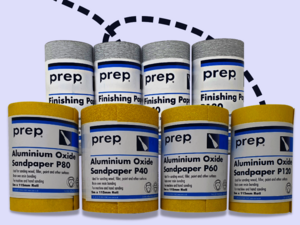The success of any painting and decorating project starts with the important phase of preparation. No matter what project, what job site or what tools you’re going to use, preparation is essential to deliver a professional end result without nasty surprises that lead to hours and hours of cleaning up.
Protection and safety in the workspace are crucial, therefore painters and decorators have to decide on the most suitable surface protection for individual projects.
From old sheets and towels to special high-quality surface protections, I’ve personally used the lot. In my early apprenticeship days, I remember using a client’s brand-new bed sheet as a dust sheet. Obviously, my client wasn’t too happy when they returned back home to find me walking all over the new sheet with paint on the bottom of my shoes.
Thankfully I’ve learnt my lesson and 20 years later I only use my wife’s new bedsheets ????
The development in surface protection has been spearheaded by social media, YouTube, diy blogs and companies dedicating resources into producing quality products that protect all kinds of surfaces. Choosing and investing into the correct protection for the job can save us professional painters and decorators a lot of time and effort. Be honest, who has not spilt a little bit of paint and cursed they should have put something down first?
The following is a run down of the most commonly used materials to protect surfaces, along with some advantages and disadvantages of their use. This list is by no means exhaustive but should give you ideas to help find the best and most suitable surface protection.
Cotton/fabric sheets
These types of sheeting protection, also called dust sheets, are probably the most common surface protection available, with the majority of households owning at least one form of cotton sheeting. The advantage of this type of sheeting is that they can be produced to specific sizes and are relatively cheap to buy. The sizes vary from square/rectangular sheet designs to cover large areas to narrow sheets which are designed for stairs and corridors.
Over the past few years innovations have produced cotton sheets with non slip backings and integrated plastic lining to minimise paint percolating through to the surface underneath.
One of the advantages of cotton dust sheets over alternatives is that with care they can last for years. A disadvantage is that they can accumulate dust and muck. Be cautious of breathing in particles when cleaning or shaking off the sheet. Also, if not properly secured they can become a trip hazard around a work area.
Plastic sheeting
Although we are now becoming more and more conscious about the use of plastic and plastic products in the construction industry (rightly so) it does have its benefits. Plastic is a versatile and flexible material that is a great solution for protecting walls, units and furniture. I personally use it to protect kitchen units, bathroom suites and furniture.
It creates a barrier to effectively stop dust and paint passing through the plastic and onto the surface underneath. Subsequently it is ideal for spraying projects to prevent the atomised paint from spreading to other areas. Along with thin plastic sheeting, thicker corrugated plastic floor protection sheets are designed to withstand very heavy foot traffic and even machinery on site.
The main issues with such materials are reusability and the environmental impact when it comes to the disposal of the product. However, most of the new generation plastics are already made from recycled material and can be reused and recycled.
Paper/card protection
Heavy duty card surface protection is used mainly to protect floors and other flat, hard surfaces such as worktops, tiles, stone or wooden floors. A range of card floor protection can also allow the surface underneath to breathe while construction/painting work is undertaken.
Installed at the beginning of a project this kind of protection provides a barrier on the floor or flat surface that keeps dust, paint and dirt away. The advantage of this type of floor protection is that it provides a flat non-slip, non-trip surface. The main disadvantage is that it takes additional time to cut, shape and secure the paper or card to an area. This is not only time consuming but can also add extra expense to a project.
Summary
Taking the time to prepare areas at the start and continuously throughout a project will result in saving valuable time and money and will definitely cause less hassle. I’ve knocked over a fair few litres of paint over the years, but thanks to planning and preparing my work areas well, haven’t had any serious accidents. Using quality surface protection has enabled me to deliver work projects within time and budget.







